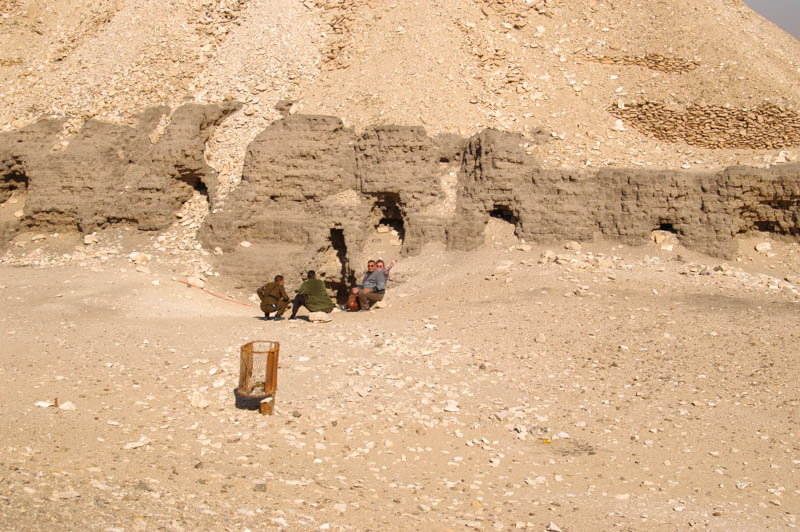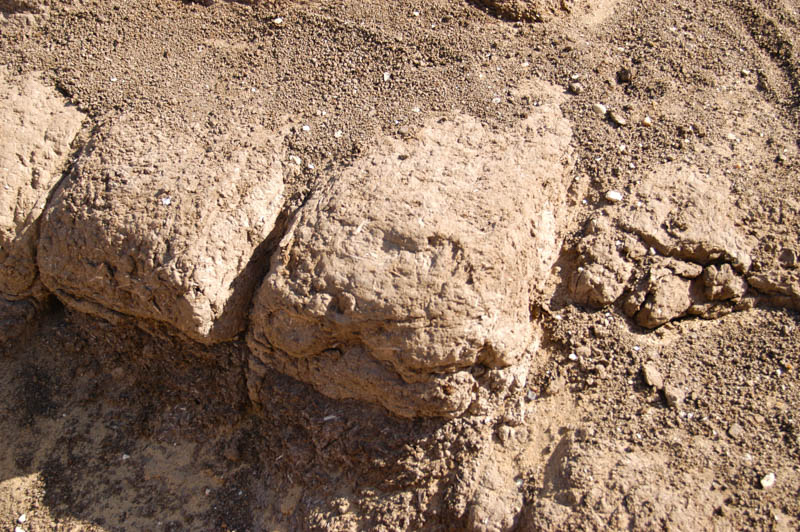
Actually, we’re not sure if this was the mastaba of Khasekhemwy, or one of the other mastabas on the site of Maidum — no one was really clear about that when we were going in.
The mastabas, an early form of burial that was usually a squarish, mud-brick structure over a subterranean burial chamber, are ruinous. They look like nothing more than piles of rock and sand. However, inside of these mastabas was found the glorious painting of the Maidum Geese (now in the Cairo museum).

I was surprised that they still remained above ground, until Fateh quite reasonably pointed out that sun-dried mud brick was nearly indestructable…unless it rained. The desert gets something like .01″ of rain a year, or less — in some areas, no rain falls at all, ever.

Stacked above the mudbrick walls are superstructures of stacked stone. YOu can see the roughly rectangular shape of the mastaba underneath the sands. They were a bit like a bench, and it’s obvious that the next stage of the development — the step pyramid — was based on this shape. The evolution of the mastaba to step pyramid to true pyramid can be seen by traveling from Saqqara (with the mastabas and Djoser’s Step Pyramid) to Maidum, then to Dashur, and finally to Giza.